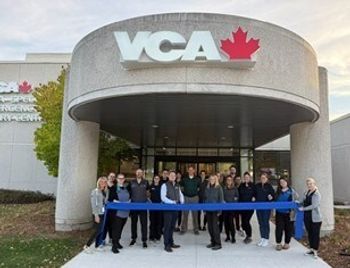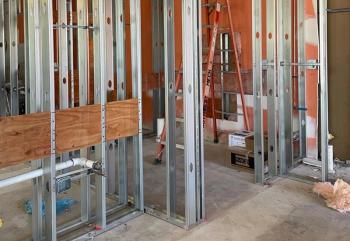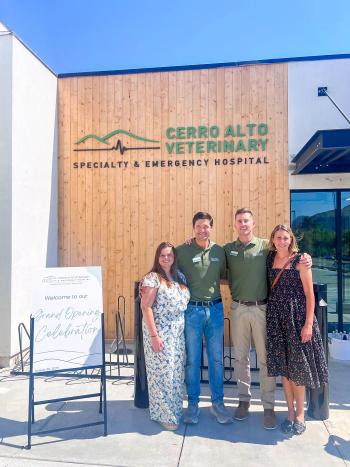
- dvm360 August 2024
- Volume 55
- Issue 8
- Pages: 10
Revamp, recharge, rejoice: transforming veterinary hospitals for excellence
Adam Christman, DVM, MBA, chief veterinary officer at dvm360, notes some common themes in successful hospital design
Last month, we had the honor of congratulating the 2024 Hospital Design360 Competition winners. We received the most entries ever, which tells us that more clinics are making changes to their hospitals, both large and small, as the landscape of veterinary medicine evolves. And this is a great thing.
Having looked at all the submissions with the judges this year, I recognized several common themes woven throughout: maximizing patient care with less stress, improving workflow efficiency, and enhancing the well-being and culture of the veterinary team. We often talk about people making the culture change, but I also found it interesting how physically changing a practice’s design can improve culture. The design and layout of a veterinary hospital play a crucial role in achieving these goals. From subtle changes like incorporating point-of-care services to more comprehensive renovations, every aspect of the hospital can be optimized to enhance the quality of care for patients and the quality of life for staff.
Enhancing patient care through thoughtful design
The primary goal of any veterinary hospital is to provide patients with the highest standard of care. The design of the facility significantly impacts patient outcomes. For instance, the layout should minimize stress for animals and their owners. Some clinics now have outdoor examination rooms and exam rooms that bypass a waiting area. Separate waiting areas for cats and dogs can reduce anxiety and create a calmer environment. Some clinics have eliminated the reception area by providing kiosks that help customer service representatives execute invoices in the exam rooms. Quiet, well-ventilated exam rooms with natural lighting can help animals feel more at ease during their visits. Pheromones and warm blankets with quiet music make the pets’ visit feel more like a day at the spa.
One of the most impactful changes a veterinary hospital can make is incorporating point-of-care (POC) services. POC diagnostic tools, such as in-house blood analyzers, ultrasound machines, digital cytology, artificial intelligence, and digital radiography, allow immediate test results. We live in a time when clients expect results in a timely manner. This time may mean the difference between life or death or whether to ship for referral or treat in-house. This improves patient outcomes by enabling prompt diagnosis and treatment and enhances client satisfaction by reducing wait times and the need for multiple visits. Through prompt results and client satisfaction, POC services also improve the quality of life for the staff.
Improving workflow efficiency
Efficiency in a veterinary hospital is crucial for maintaining a high standard of care and reducing staff burnout. A well-designed hospital layout can significantly improve workflow efficiency. For example, placing high-use areas such as exam rooms, treatment areas, and surgical suites in proximity can reduce the time and effort required to move patients and equipment between these spaces.
Incorporating technology, such as electronic medical records and practice management software, can streamline administrative tasks, allowing veterinarians and technicians to focus more on patient care. Automated inventory management systems can ensure that essential supplies are always available, reducing the risk of treatment delays.
Enhancing practice culture
Has your team ever been involved in a renovation process? It’s fun to get their buy-in about what colors to select or how a space should be reimagined. Allowing the team to be part of the decision-making process helps improve morale and boost employee retention.
One of the most important aspects of enhancing practice culture is prioritizing employee well-being. Providing a comfortable and inviting break room can significantly improve staff morale. A well-equipped break room with comfortable seating, kitchen facilities, and recreational activities can offer a much-needed respite during busy days. Some practices have massage chairs and areas for employees to decompress during breaks.
Allowing employees to laugh, listen to music, and be their most authentic selves empowers them to contribute to the team. Encouraging regular breaks and providing a space for relaxation can help reduce stress and prevent burnout.
Improving quality of life may also be achieved with efficient space utilization, incorporating technology, separate waiting areas for dogs and cats or no waiting area, natural lighting and ventilation, staff training and development, ergonomic workstations, and even a wine bar or snack station.
Subtle changes with significant impact
Sometimes, even subtle changes can significantly impact the quality of care and the well-being of the veterinary team. For example, introducing noise-reducing materials in the hospital can create a quieter environment, reducing patient and staff stress. Simple organizational tools, such as color-coded labels and storage bins, can improve efficiency and reduce clutter. Consider adding a day in the week for feline-friendly hours. Designing a veterinary hospital that better serves patients, improves workflow efficiency, and enhances practice culture requires thoughtful consideration and planning. Ultimately, investing in the design and layout of a veterinary hospital is an investment in the well-being of both patients and the veterinary team, leading to a more successful and fulfilling practice.
Follow our content here at dvm360 as we continue to provide hospital design perspectives from our colleagues around the country. You will surely find some key takeaways you can easily implement in your hospital.
Articles in this issue
about 1 year ago
Sharing stories of compassion on the West Coastabout 1 year ago
Meet the 2024 Hospital Design 360 Competition Merit Winnersabout 1 year ago
Equine head wounds and skull fracturesabout 1 year ago
Converting callers into clientsabout 1 year ago
Life lessons from a US Army Veterinary Corps veteranabout 1 year ago
Designing for low-cost community veterinary servicesabout 1 year ago
Award winners show why hospital design mattersabout 1 year ago
Social media: friend or foe?over 1 year ago
RECOVER Initiative announces updates to CPR guidelinesNewsletter
From exam room tips to practice management insights, get trusted veterinary news delivered straight to your inbox—subscribe to dvm360.






